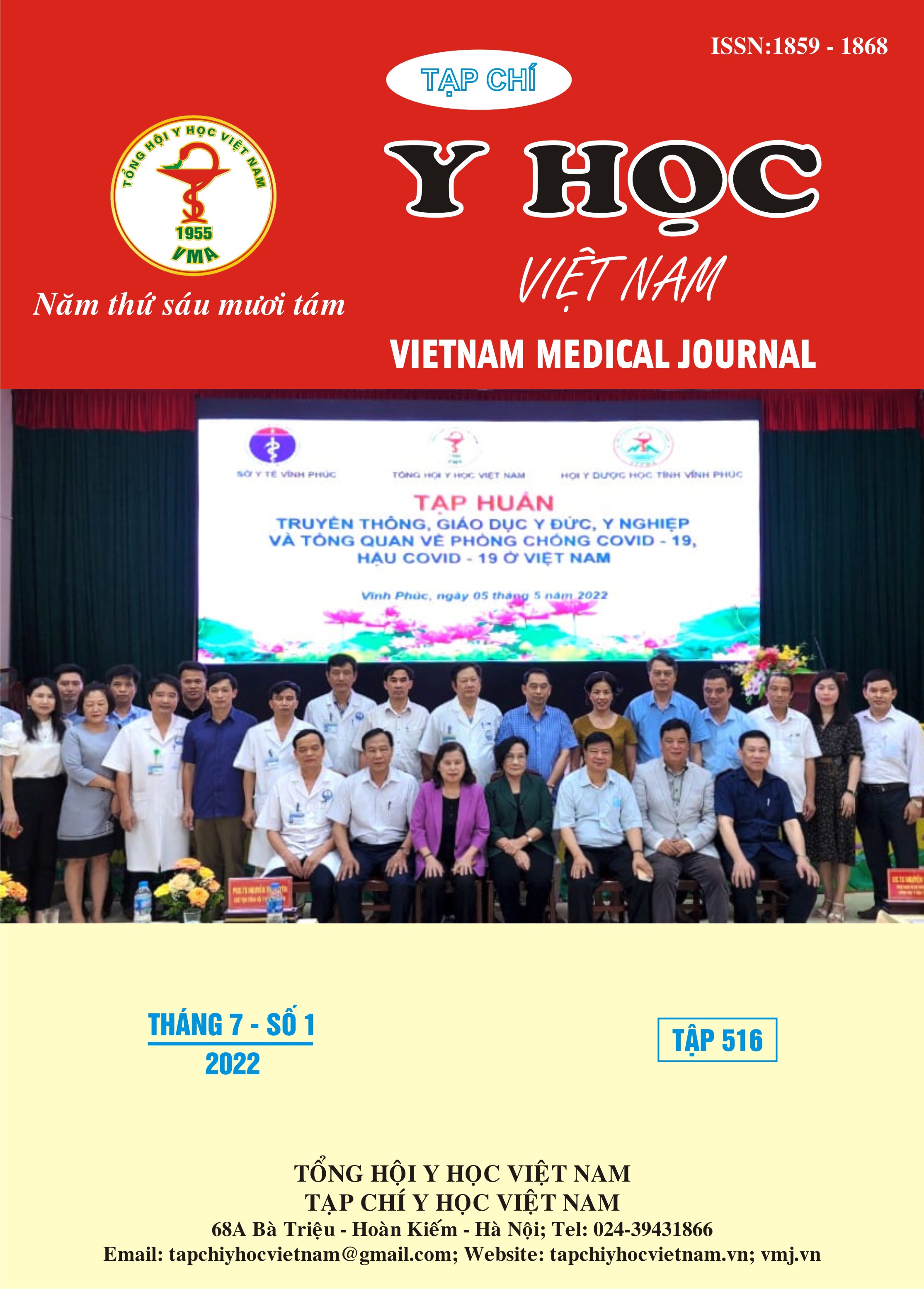THE NUTRITIONAL STATUS AND CHILDREN'S FOOD OF CHILDREN AT HAI LUU COMMUNE KINDERGARTEN, SONG LO DISTRICT, VINH PHUC PROVINCE IN 2021
Main Article Content
Abstract
A cross-sectional study was conducted about a dietary survey on 448 children who study at Hai Luu kindergarten in 2021 with the aim of describing the nutritional status and semi-boarding diets of children at kindergarten in Hai Luu commune, Song Lo district, Vinh Phuc province in 2021. The method of assessing nutritional status is based on the WHO growth standards in 2007 and the assessment of children's diets according to the nutritional needs recommended for Vietnamese people by the Institute of Nutrition in 2016. Research results show that the overall rate of malnutrition in children is 4,0%, of which underweight is 2,0%, stunting is 3,3%, emaciation is 0,0% and there were no cases of overweight or obese children. The average energy in a child's diet at school is 555,7 kcal. The percentage of energy provided by Protein, Lipid, and Glucid all meet the recommended needs. Thus, the rate of malnutrition among preschool children is low compared to the national average, and the children's semi-boarding diets at school have provided a relatively sufficient amount of energy according to the children's needs.
Article Details
Keywords
Children, nutritional status, dietary intake, preschool
References
2. Sarah. E. C, Michael. K. G (2016), “The role of nutrition in brain development: the golden opportunity of the “first 1000 days””, The Journal of pediatrics, 175, 16-21.
3. Bộ Y tế công bố kết quả Tổng điều tra Dinh dưỡng năm 2019-2020. https://moh.gov.vn/tin-noi-bat/-/asset_publisher/3Yst7YhbkA5j/content/bo-y-te-cong-bo-ket-qua-tong-ieu-tra-dinh-duong-nam-2019-2020
4. Nguyễn Thị Thịnh, Lưu Quốc Toản (2016), “Suy dinh dưỡng ở trẻ em dưới 5 tuổi tại xã Lãng Công, huyện Sông Lô, tỉnh Vĩnh Phúc năm 2013”, Tạp chí Y học dự phòng, 26(1), 77.
5. Sở Y tế Vĩnh Phúc (2018), Thiết thực phòng, chống suy dinh dưỡng trẻ em.
6. Bộ giáo dục và đào tao (2016). Thông tư 28/2016/TT-BGDĐT sửa đổi chương trình giáo dục mầm non, ban hành ngày 30/12/2016.
7. Bộ Y tế, Viện dinh dưỡng quốc gia, Cách phân loại và đánh giá tình trạng dinh dưỡng dựa vào Z-Score http://viendinhduong.vn/vi/suy-dinh-duong-tre-em/cach-phan-loai-va-danh-gia-tinh-trang-dinh-duong-dua-vao-z-score-603.html.
8. Trương Thị Thùy Dương và cộng sự (2021), “Thực trạng dinh dưỡng và một số yếu tố liên quan của trẻ em tại trường mầm non Trưng Vương, thành phố Thái Nguyên năm 2020”, Tạp chí Y học dự phòng, 31(9), 297-302.
9. Bùi Thị Huyền Diệu (2021), “Tình trạng dinh dưỡng và sức khoẻ của trẻ tại 3 trường mầm non huyện Vũ Thư, Thái Bình năm 2019”. Tạp Chí Y học Dự phòng, 31(2), 110–116.
10. Bộ Y tế, Viện dinh dưỡng (2007), “Bảng thành phần thực phẩm Việt Nam”, Nhà xuất bản Y học, Hà Nội.


